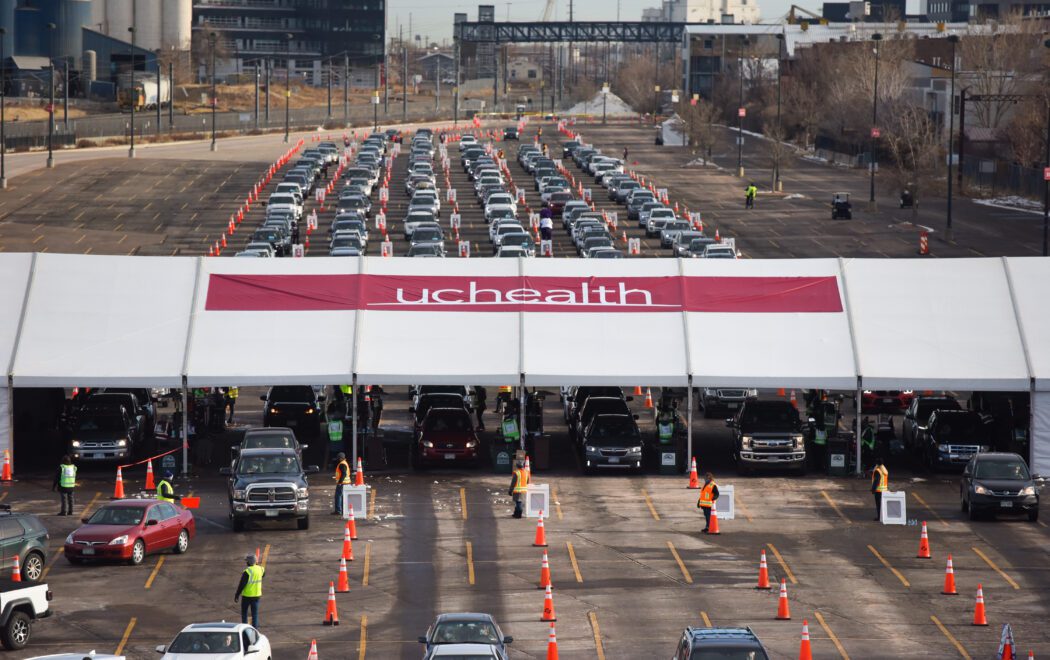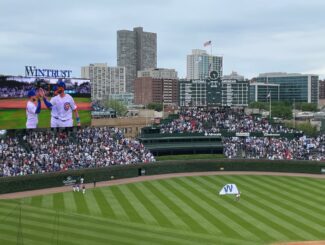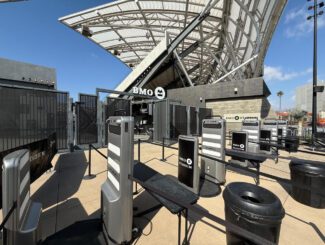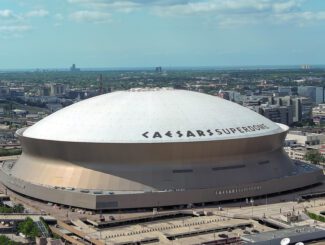
While the Covid-19 pandemic kept many fans from attending live events the past year, that didn’t mean that stadiums stayed empty. After first serving as Covid-19 test sites, since the start of the year many stadiums and arenas across the country lent their parking lots and indoor spaces to vaccination efforts, using the wide-open spaces and already-in-place resources like power, wireless connectivity and refrigeration equipment to support mass vaccination sites that helped speed up the nation’s recovery efforts.
Stadium Tech Report contacted many stadiums across the country to get details on what was needed from a technology standpoint to support the pop-up vaccination site efforts. Please read the rest of the profiles in this series, including in-depth looks at the setups at Hollywood Park in Los Angeles, Coors Field in Denver, Colo., Dodger Stadium in Los Angeles, and Levi’s Stadium in Santa Clara, Calif.
While vaccination sites are now widespread and generally available to all, at the early stages of the rollout the mass-vaccination sites at stadiums helped jump-start the nation’s efforts to get shots in arms.
By the end of March, more than 1 million vaccinations had taken place at MLB stadiums, including the following facilities: Citi Field, Coors Field, Dodger Stadium, Fenway Park, Globe Life Field, Marlins Park, Minute Maid Park, Oakland Coliseum, Petco Park, PNC Park and Yankee Stadium.
As of mid-April 2021, the NFL said that more than 2 million vaccinations have been given at league stadium sites.
In some cases, primarily those where vaccinations were administered within the venue’s walls, the temporary setups were making use of the already installed technology infrastructure, including wireless networks, entry-way security systems and digital signage, to provide back-end connectivity for operations and forward-facing systems for traffic management and flow.
But at many other sites, especially those making use of large public venue parking lots to host drive-up vaccinations, some very interesting temporary technology installations took place place, often in partnerships between teams, public safety operations and local health-care providers.
— At State Farm Stadium in Glendale, Ariz., the parking-lot vaccination site used the on-site distributed antenna system (DAS) to support cellular connectivity to the tablets used by medical personnel. The setup used freezers inside the stadium to store the vaccine, and used catering operations inside the stadium to keep break tents supplied for the workers.
— At Bank of America Stadium in Charlotte, N.C., the local care provider, Atrium Health, used a mix of stadium Wi-Fi and stadium DAS to support the vaccination site. Laptops set up on the main concourse used the stadium’s Wi-Fi to check in patients and to record administration of vaccines. Videoboards and internal TV infrastructure was used to share information with patients throughout their time at the stadium as well as to provide partnership messaging.
— At Gillette Stadium in Foxboro, Mass., the vaccination efforts used the Putnam Club on both sides of Gillette Stadium. Each club is 60,000 square feet, providing an indoor space that allowed the site to welcome, register and administer vaccinations, with enough space to allow everyone to sit physically distanced after getting their vaccination. The vaccination setup used both the stadium’s Wi-Fi network and the cellular network. The site also used hardwired connections through Gillette Stadium’s IT infrastructure.
— At Lumen Field in Seattle, Wash., the vaccination site used the stadium’s event center space, where Wi-Fi coverage was provided by approximately 30 APs. The APs were all Wi-Fi 6 devices, installed during the stadium’s recent upgrade of its overall Wi-Fi network.
Please read the rest of the profiles in our series about stadium vaccination sites, including in-depth looks at the setups at Hollywood Park in Los Angeles, Coors Field in Denver, Colo., Dodger Stadium in Los Angeles, and Levi’s Stadium in Santa Clara, Calif.










